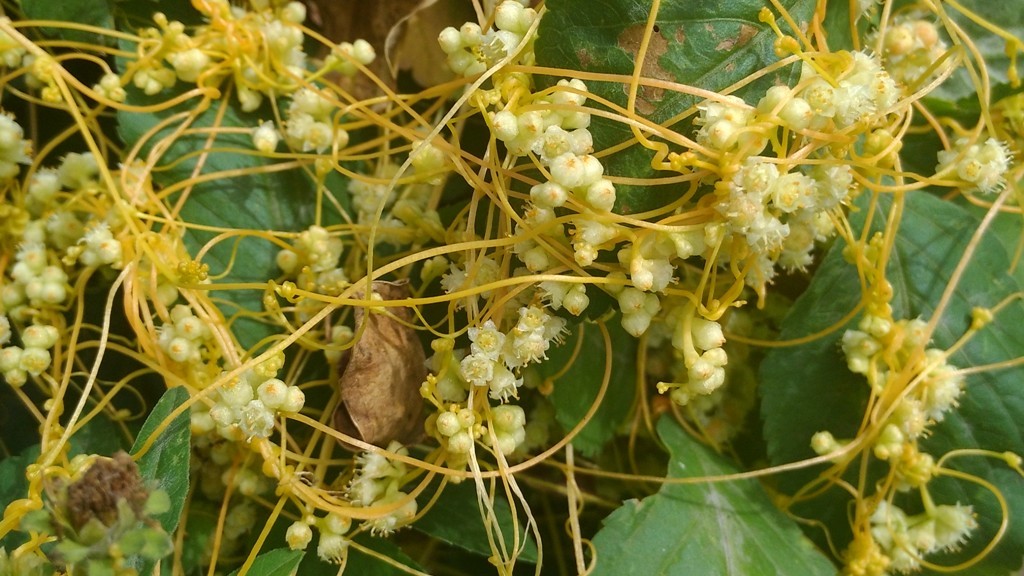I recently came across an interesting weed in the parklands adjacent to our bushcare site in Brookfield (see photo). Golden dodder (Cuscuta campestris) is a parasitic plant that is unable to produce its own chlorophyl and is therefore non-photosynthetic.

Golden-Dodder-Cuscuta-campestris-2-photo-Camel-Yueh-licensed-under-CC-BY-SA-2.0
It is categorized as holoparasitic because it is unable to complete its life cycle without attaching itself to another plant. It begins life normally, as a seed that germinates in or on the soil. The bright yellow leafless thread-like stems that emerge from the seeds will die quickly (within 5-10 days) if they can’t reach another (green) plant. The stems produce small root-like structures called haustoria that penetrate the host plant’s stems or leaves to extract water and nutrients. Once it attaches itself to the host plant, the vestigial root of the dodder in the soil dies and the plant becomes entirely dependent on its host. Golden dodder produces dense clusters of small cream to white flowers, 2-4mm long, with five pointed petals. The resulting globular seed capsules contain up to four seeds.
Golden dodder is native to central North America and belongs to a genus of over 200 yellow, orange or red parasitic plants worldwide. Formerly treated as the only genus in the family Cuscutaceae, it now is accepted as belonging in the morning glory family, Convolvulaceae. The genus is found throughout temperate and tropical regions of the world, with the greatest species diversity in subtropical and tropical regions. Dodder can grow and attach itself to multiple plants. In tropical areas, it can grow more or less continuously and may reach high into the canopy of shrubs and trees.
Dodder is a significant pest of crops, particularly of plants belonging to the daisy family (Asteraceae), but it also parasitises a wide range of both naturalised species and native plants in grasslands, open woodlands, coastal vine thickets, riparian zones and wetlands. It causes damage by absorbing food material from the host plant, but the dense mat of stems it produces can also cause shading of the ground vegetation layer. It is considered to be a minor environmental weed in south-eastern Queensland. In general, dodder infestations range in severity depending on the host species, the time of attack, and whether any viruses are present in the host plant. By debilitating the host plant, dodder reduces the ability of plants to resist viral diseases. It can also spread plant diseases from one host to another if it is attached to more than one plant.

Golden Dodder (Cuscuta campestris) photo: Jim Pope
Golden dodder is also commonly known as Angel’s hair, Beggar vine, Love vine and Strangle weed. I am told that the name ‘Love vine’ stems from the fact that native American women were apparently told to break off a piece of the dodder, call out the name of a young man they were interested in and throw the vine onto another plant; if it grew there, the affection was mutual!
Jim Pope
Wildlife Matters is published in: 

